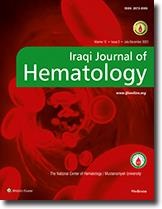Abstract
Abstract:
Hemophilia, a genetic disorder characterized by impaired blood clotting, often leads to joint and muscle bleeds, resulting in chronic pain and reduced mobility. Exercise has emerged as a therapeutic intervention to enhance physical capacity and minimize bleeding risks among individuals with hemophilia. The aim of the present scoping review to explore and synthesize the available literature on exercise prescription in hemophilia, focusing on its role in promoting mobility and reducing bleeding complications. A systematic search was conducted across multiple databases, following the Preferred Reporting Items for Systematic reviews and Meta‑analyses extension for Scoping Reviews guidelines to identify studies addressing types, intensity, frequency, and safety measures associated with exercise in hemophilia management. Our findings highlight various exercise protocols, including resistance training, aquatic exercises, and low‑impact aerobic activities, as effective in improving joint stability, muscle strength, and overall physical function. The review also identifies critical safety considerations, such as personalized exercise intensity and regular monitoring to prevent injury. Although evidence supports the benefits of structured exercise, there remains a need for standardized guidelines specific to hemophilia. Future research should focus on long‑term outcomes and individualized exercise regimens to optimize therapeutic gains. This review offers a foundation for healthcare professionals to develop tailored exercise prescriptions, facilitating better mobility, and reduced bleeding risk in hemophilia patients.
Hemophilia, a genetic disorder characterized by impaired blood clotting, often leads to joint and muscle bleeds, resulting in chronic pain and reduced mobility. Exercise has emerged as a therapeutic intervention to enhance physical capacity and minimize bleeding risks among individuals with hemophilia. The aim of the present scoping review to explore and synthesize the available literature on exercise prescription in hemophilia, focusing on its role in promoting mobility and reducing bleeding complications. A systematic search was conducted across multiple databases, following the Preferred Reporting Items for Systematic reviews and Meta‑analyses extension for Scoping Reviews guidelines to identify studies addressing types, intensity, frequency, and safety measures associated with exercise in hemophilia management. Our findings highlight various exercise protocols, including resistance training, aquatic exercises, and low‑impact aerobic activities, as effective in improving joint stability, muscle strength, and overall physical function. The review also identifies critical safety considerations, such as personalized exercise intensity and regular monitoring to prevent injury. Although evidence supports the benefits of structured exercise, there remains a need for standardized guidelines specific to hemophilia. Future research should focus on long‑term outcomes and individualized exercise regimens to optimize therapeutic gains. This review offers a foundation for healthcare professionals to develop tailored exercise prescriptions, facilitating better mobility, and reduced bleeding risk in hemophilia patients.
Keywords
Exercise
hemophilia
mobility
resistance training
